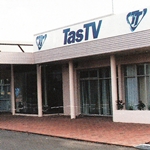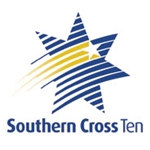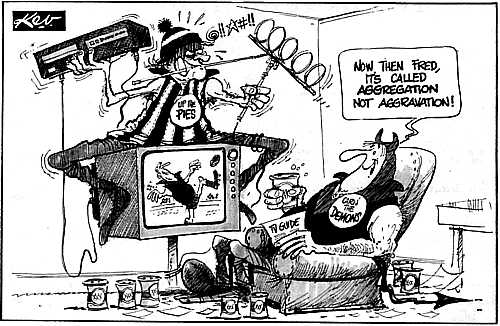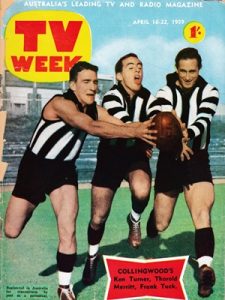
In the 1980s regional television in Australia underwent the most radical transformation possibly since the introduction of television itself.
The original framework for regional television in Australia (that is, outside of the major capital cities) allowed for well populated regional areas to receive one ABC station and one commercial station. The smaller capital cities Canberra, Hobart, and later Darwin, also came into this category. This was in comparison to the larger capital cities that had ABC and two (later three) commercial stations.
Under this system of regional television, the local commercial channel would have a strong connection to their respective communities through their coverage of local news, sports and community events and other local programs, and would enjoy a monopoly situation with the only competition coming from the national broadcaster ABC. The commercial channels could also “cherry pick” their selection of programs from the three capital city networks, though this was no guarantee that they would select the best or most popular programs. Regional viewers constantly bemoaned the fact that they would miss certain programs that were popular in the cities, or would see them much later than their city cousins.

The “solus” system, as it became known, continued into the 1970s and 1980s. However by the mid 1980s, technology had advanced from those early days and regional viewers were still limited to only the ABC and their local commercial monopoly. The Hawke Government, keen to grab the support of voters in regional areas, initiated a scheme to bring viewers in these areas in the well-populated eastern states in line with their capital city neighbours — Regional Equalisation through the process of aggregation of local television services. (Other states would follow with alternative plans later)
The concept of aggregation would allow a local commercial channel to expand its signal to two neighbouring regional areas, and the stations in those neighbouring areas would reciprocate, thus transforming a larger area from three local solus markets to one competitive market. In addition to this, the second national broadcaster SBS would expand services into regional areas, therefore providing viewers with five free-to-air networks, same as the capital cities.
The three commercial channels would now be in competition with each other and would each form a relationship with one of the capital city networks for the supply of programs.
The regional TV operators objected to the proposal, claiming that it would destroy regional television and its local identity, and with that would affect local employment as local services would effectively become relay transmitters for the capital city networks.
Despite the protests, aggregation was to become a reality and the regional operators had to overcome the huge task of constructing infrastructure and facilities to enable their expansion into the neighbouring markets, costing into the millions of dollars, all while during a recession. At the same time, these former local monopolies were forming affiliations with the capital city networks.
Viewers in these areas were also preparing for pending increase in choice by upgrading their TV sets and aerials to pick up the new channels. Most of the new services would be on the UHF band, as opposed to their existing ABC and commercial channels which were predominantly on VHF, so in many instances a new UHF compatible aerial was required or at least some education in tuning their sets to UHF.

The implementation of aggregation was phased in across Victoria, New South Wales/ACT and Queensland. The first “approved market” was Southern NSW and ACT, implemented in 1989, which would see former solus operators Prime (Orange/Dubbo/Wagga Wagga), WIN (Wollongong/Illawarra) and Capital (Canberra) expand into each others markets and each aligned to a capital city network – Prime to Seven, WIN to Nine and Capital to Ten.
Next stage was regional Queensland to be implemented on 31 December 1990 with the aggregation of the coverage areas of Sunshine Television Network (Mackay/Maryborough), QTV (Townsville/Cairns) and Star Television (Toowoomba/Rockhampton). However controversy struck just seven days before the big day as Star, which was lined up as the Ten affiliate, suddenly snatched the top-rating Nine affiliation from QTV, which had yet to formalise its agreement with Nine. Star Television, owned by WIN Corporation, then announced its name change to WIN Television, in line with its NSW counterpart. QTV was left with no option but to revise its entire schedule, which had been based on Nine Network programming, and switch its allegiance to third ranked Network Ten at a few days’ notice.

The Northern NSW market, stretching from the NSW Central Coast up to the Gold Coast, was implemented from 31 December 1991 with local networks Prime (Tamworth/Taree), NBN (Newcastle) and NRTV (Northern Rivers/Gold Coast) now in competition across the expanded market as affiliates to Seven, Nine and Ten Networks respectively.
The next stage in the process of aggregation was Regional Victoria, originally scheduled for implementation in 1993, but had been brought forward to 1 January 1992 with VIC TV (Ballarat/Shepparton) and Southern Cross (Bendigo/Gippsland) expanding across the Victorian “approved market”. Prime Television (Albury) delayed its expansion across Victoria until March 1992.

Once the three eastern states were completed, the Government decided to expand the concept to Tasmania which was then served by two local commercial services, one based in Hobart (TAS TV) and the other in Launceston (Southern Cross). On 30 April 1994, the two stations expanded into each others’ markets with TAS TV (now WIN) being a Nine affiliate, and Southern Cross entering into a joint affiliation with Seven and Ten. In 2004, Tasmania received a third commercial channel with the advent of Tasmania Digital Television (TDT), a joint venture between WIN and Southern Cross. The first digital-only commercial station in Australia, TDT launched with a predominantly Network Ten-based schedule but also carried some Seven Network programming.
Aggregation was not implemented in Western Australia, South Australia and the Northern Territory as it was deemed that these areas were too widespread and/or did not have the population to support three competing commercial television services. Alternative arrangements were made in more recent years to provide choice in these areas.

Aggregation did achieve its goal of providing the same level of choice across regional areas in the populated eastern states. Viewing figures jumped with the arrival of the expanded competition – people were suddenly spending more time watching TV. However with all this expanded choice comes a price. The dire predictions of the regional TV operators pre-aggregation were becoming reality. The cost of providing expanded services was taking its toll on the regional networks and cutbacks followed with the most effected area being local production. Local news and programming was being phased out in favour of networked coverage from the cities. Regional network giants such as WIN were being formed as the company bought out smaller regional operators such as VIC TV and TAS TV. Southern Cross Broadcasting, which began as two local commercial channels in Victoria in the 1980s, had expanded up the entire east coast with its Southern Cross Ten brand taking over Ten affiliates QTV, Capital and NRTV.
YouTube: Regional TV Australia
The new-look regional networks were gradually becoming clones of their capital city counterparts. Regional areas were losing their local identity, though it would seem most viewers see that as a small price to pay for the expanded choice available.
However by 2001, the situation had become desperate enough for the Australian Broadcasting Authority to step in. Community outrage had been sparked by the axing of local news services by Prime Television and Southern Cross Broadcasting’s Ten and Seven Network affiliates. In some areas this would leave only WIN or NBN as the only local news outlet and many argued this not to be an adequate or balanced coverage. An ABA investigation ruled that regional networks in the aggregated markets would now have to provide a minimum level of local news and information in individual markets.

Related Links:
Transdiffusion/EMC: Australian Aggregation
Southern Cross Austereo
Prime Media Group
WIN Television
NBN
Australian Communications and Media Authority
original text © TelevisionAU





